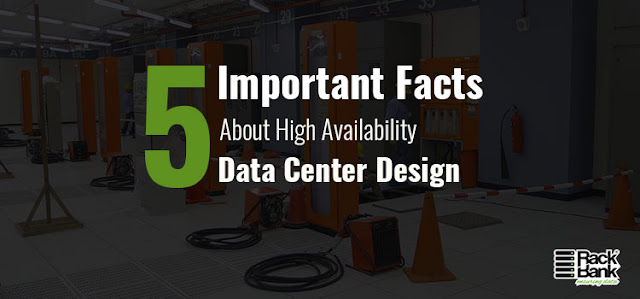 5 Important Facts about High Availability Data Center Design
5 Important Facts about High Availability Data Center Design

As the datacenters become more and more essential to enterprise applications, there’s a rise in the concerns about datacenter reliability and its availability. Redundancy is considered to be an important factor for infrastructure reliability by industry experts, but it’s not the only factor; what’s more important is the need to keep the design and actual requirements of enterprises in sync.
Having redundancy more than is needed can lead to unnecessary expenditures obstructing the path to high reliability. So, it becomes imperative that missions and needs of companies are aligned with data center performance.
Here are some important facts affecting availability that must be kept in mind:
1. Increasing redundancy may not always be the right thing to do
Actual reliability comes with the designing datacenter according to application needs and not by furthering infrastructure redundancy; as it doesn’t make a system more reliable. In fact, reliability lowers at a point when redundancy is increased greatly; and the reason for this is the enhanced system complexity and difficulty to manage it.
2. Tier IV costs 2X more than Tier II design
It isn’t any wise to just design and build the reliable infrastructure that would be affordable considering redundancy costs, it must be supporting the applications well too. There doesn’t lies much difference between Tier I & Tier II as is the case for Tier III and Tier IV. However, there’s huge difference in the way Tier II & Tier III are designed. That’s why Tier IV costs are nearly double compared to that of Tier II design.
3. 2(N+1) UPS Configurations aren’t any more reliable than 2N one
You would expect 2(N+1) generators to be more reliable than 2N UPS design but that’s not how it works in reality. They both have the same failure probability without much difference in operation. So, this is another example where redundancy is not directly proportional to the reliability.
4. 2N generator configuration is slightly reliable than the N+1
Between 2N and N+1 generator configurations, there’s considerable difference in observed availability. Failure probability difference is (1.5-4.41) % and 2.94% respectively. You don’t really need to go for prime rated generators instead if you want to meet Tier-IV standards as standby generator would suffice. Usually, Uptime demands generators to run even during maintenance that all the major generator manufacturers do provide.
5. Generators do hit problems when run for longer time durations
In a lab research, it was discovered that 15 % emergency diesel generators failed after 8 hours of continuous operation; 1% failed after 24 hours; 5% failed after 0.5 hour; and 2% simply failed to start. So, the generator redundancy is crucial as the generators have tendency to fail. When they are run for longer period of hours, the generators hit a snag leading to its failure.
Conclusion
To sum up, reliability isn’t solely governed by redundancy factors and Uptime tier systems. Other important factors that come into play for high availability datacenter design are site age and location, building construction, equipments’ quality, commissioning process, operations and maintenance practices, personnel training and more. And not to forget, the concept of redundancy for reliability is somewhat related to the infrastructure design and not on the whole.
|
|
